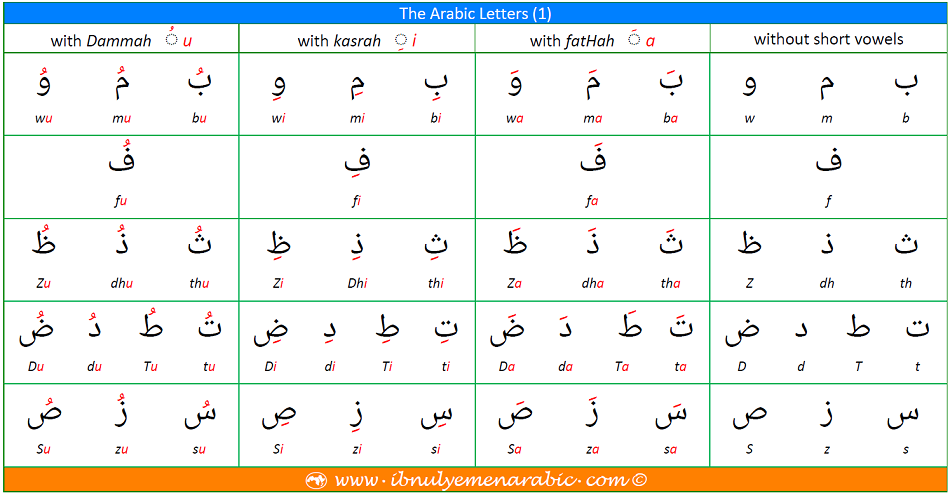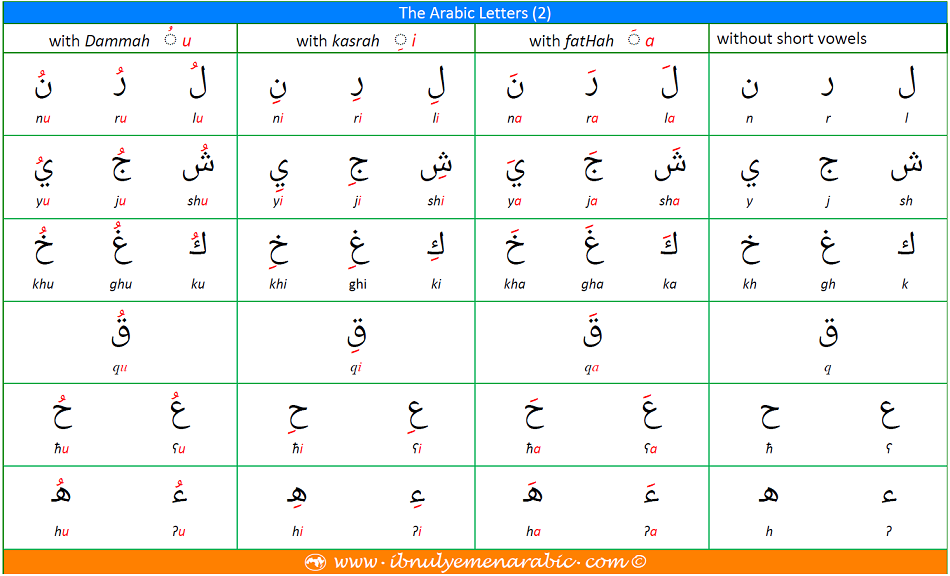There are twenty-eight letters in the Arabic Alphabet. All of these letters are consonants. Two of them are also vowels (i.e., besides being consonants, they are also vowels). In addition to these, there are the alif without hamza (ا) and the madda (آ), which is a combination of alif with hamza (أ) and alif without hamza (ا), as in أَكَلَ "he ate" which becomes آكِلَ (أَاكِل) "eater" when we add the agentive alif after the first letter of أَكَلَ. So, there are thirty letters in total. As regards vowels, there are six: three short vowels, which are secondary since we don't add in Modern Standard Arabic, and three long vowels, which are primary, as they are orthographically like other consonant letters.

The short vowels are not letters; they are diacritical marks. These are: the fatħa ( َ ), the kasra ( ِ ), and the dhamma ( ُ ). The pronunciation of the fatħa ( َ ) is a. We pronounce the kasra ( ِ ) i. The pronunciation of the dhamma ( ُ ) is u. The long vowels are the alif (ا), and its pronunciation is aa; the yaa (ي), and its pronunciation ii; and the waaw (و), and its pronunciation is uu. Therefore, they (the long vowels) are prolonged versions of the short vowels. That is, a corresponds to aa, i corresponds to ii, and u corresponds to uu. In Arabic, the grammar term for vowels is ħarakaat “motions”.

The grammar term for short vowels is al-ħarakaat al-qaSiirah الْحَرَكَاتُ الْقَصِيرَة. For the long vowels, it is al-ħarakaat al-Tawiilah الْحَرَكَاتُ الطَّوِيلَة. The short vowels al-ħarakaat al-qaSiirah accompany the consonant letters. That is, we add them over or below the letters. This results in three different pronunciations for each letter. With the fatħa, pronounced as a, we pronounce the letters ba, ma, wa, fa, tha, … etc, as in the second column in the tables. With the kasra, pronounced as i, the pronunciation of the letters is bi, mi, wi, fi, thi, …etc., as in the third column in the tables. The pronunciation with the dhamma becomes bu, mu, wu, fu, thu, …etc., as in the last column in the tables.
In the next lesson, you will learn how the consonant letters are pronounced when they are followed by long vowels.